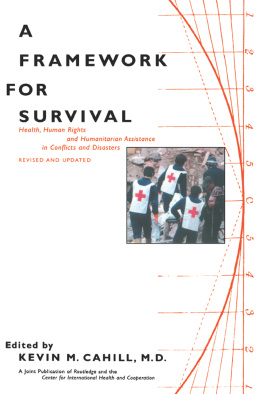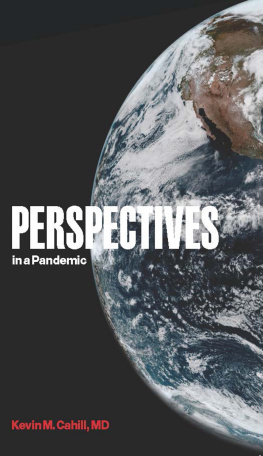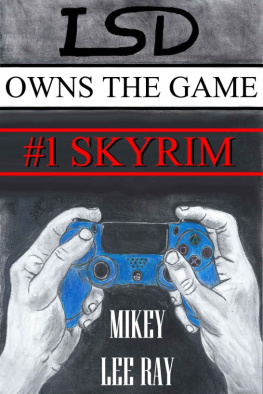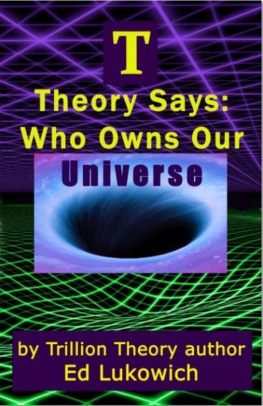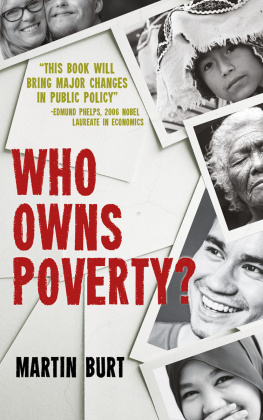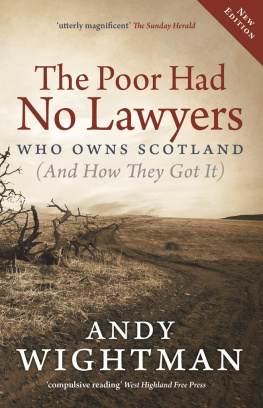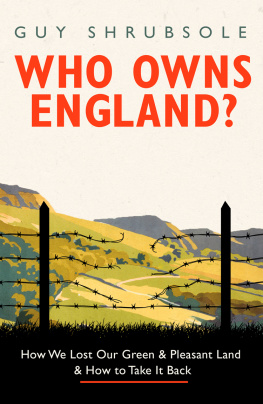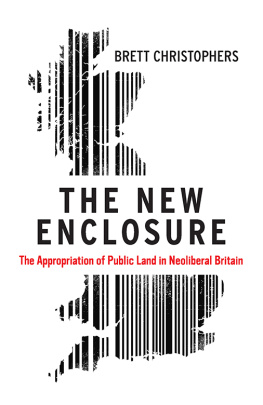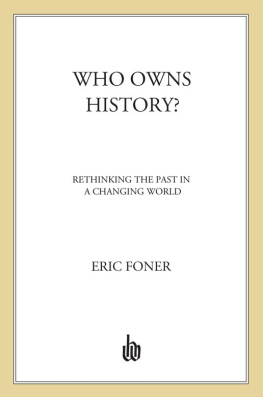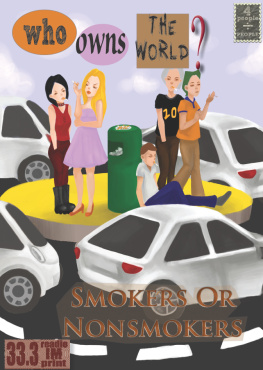The inspiration for this book comes from many places and people, but none so central as a long-dead priest, Pierre Teilhard De Chardin, recipient of the Croix de Guerre and Chevalier of the Legion of Honour for his bravery as a battle medic in World War I. The French recognized his qualities but the Vatican didnt. They banned him from publishing his works during his lifetime. His posthumous book, The Phenomenon of Man, accompanied me in my combat trouser pocket through my own small wars in the mid-twentieth century.
I am indebted to the late John McEwen, first chronicler of the landowners of Scotland, and to his chronicler heir, Andy Wightman; and to Jamie Byng, who published both Andy and myself. I also owe a special debt to Mark Hollingsworth and Mary Ann Nicholas, journalists who introduced me to the original publisher of this book, Bill Campbell and his unique editor, Kevin OBrien. After that to James Connolly SC and Garrett Wren CA in Dublin, and to the uncrowned Queen of Ireland, Ms. Eileen Murphy FRSA. Others owed a debt are Denis McSweeney and Marian Becker of Denis McSweeny Solicitors. Also Joey Joseph, Akiva Kahan, and Steve Tuckman at Joseph Kahan LLP in London. In the UK Parliament, Lord John Laird of Artigarvan, the Rt. Hon. Michael Meacher MP, and Ms Fiona OCleirigh FRSA in the House of Lords are owed a special thanks, as are the Hon. Richard and Mary Burke from Dublin; and to the uncrowned Queen of Ireland, Ms. Eileen Murphy FRSA, thank you. At the Royal Society for the Arts, Sir Paul Judge, Ms. Penny Egan OBE, Michael Devlin, Paul Crake, and Stephen Barton and my close colleagues in the RSA SW, Ian Hosker FRSA, Stanley Parker FRSA, and Robin Tatam FRSA, are all owed a thank you for their endless support. I cannot thank my family enough, starting with my wife, Rosalind, for all she and our three daughters, Jane, Kay, and Stella, with Ed Cox, Ian Sheldon, and Jen Copley, have done, both personally and professionally, for me and for this book. My sister Eibhlin and her husband, Derek, as well as my brother Michael and family, have always encouraged me.
I owe a major debt to the following: Paul Brown FRSA and Richard Norton Taylor of the Guardian newspaper. To Mark Watts FRSA, investigative journalist, and to Professor Bob Home, thank you. Also to Antonia Swinson, Brian and Jilly Johnson, Malachy McClosky of the Boyne Valley Honey Company, Mike Murphy of Co-operation Ireland Charity, and Justin Glass at EAG. To Dr. Philip Beresford, editor of the Sunday Times Rich List, where my adventures in land ownership began, and to his wife, Della Bradshaw, a very special thanks. To Suzanne and Adrian Oldfield of Tavistock and Lee and Kathy Hoyle, many thanks for help with U.S. real estate registration.
Finally to the shy ones, An Banrion and the diamond lady, thank you both.
Kevin Cahill was born in Rathdowney Co. Laoise, in the Irish Republic. He now lives in Exeter, Devon, in the UK, with his wife, Ros. They have three daughters and one grandson, Ivo. A former infantry platoon commander, he was educated at Rockwell College, the Royal Military Academy, Sandhurst, the University of Ulster, and the University of Exeter. Kevin is a senior advisor in the House of Lords in London and has worked in the House of Commons, the European Parliament, and with members of the Dail and Senate in Dublin. A journalist for much of his life, Kevin was a researcher and associate editor on the Sunday Times Rich List, an editor at large on Sunday Business, and wealth editor at Eurobusiness and BusinessAge magazines. He compiled 27 rich lists, including the European Rich and the Richest Women in the World, for Eurobusiness. He covered wars in the Middle East, the Western Sahara, and Northern Ireland. He was elected an honorary member of the Foreign Correspondents Club in Tokyo in 1987. He is the chairman of the South West region of the Royal Society for the Arts (RSA) and an elected fellowship councillor of the Society. He is a fellow of the British Computer Society and also a fellow of the Royal Geographical Society and of the Royal Historical Society, mainly for his books on land ownership. He is a member of the American Association of Geographers and of the Royal Canadian Geographical Society.
He is currently a doctoral student at the University of Exeter in the History Department, preparing a thesis on landownership in Devon, as well as four books on landownership in the western counties of England, Devon, Cornwall, Somerset, and Dorset.
Rob McMahon is a freelance writer and editor with more than fifteen years experience in book publishing.
Income doesnt make you wealthy. Assets do.
Advertisement for Portfolio Building Services,
as seen in Financial Times, June 11, 2004
P overty and wealth are not, as is often thought, opposites. Instead, the two words predicate a problem, poverty, and also indicate its solutionwealth. Land is the single most common characteristic of wealth worldwide. What the poor lacklandthe rich have in spades. In fact, land defines the wealthy to a far greater extent than cash. According to the World Wealth Report 2007 released by Merrill Lynch/Capgemini there are 9,500,000 millionaires worldwide totaling 0.15% of the population. Likewise, there are 3,200,000 in North America (mostly found in the United States) totaling 0.62% of the regional population. Of the earths 6,600 million inhabitants, few, perhaps just 15%, own anything at all, and most are pitifully poor. The distinguishing feature of universal poverty is landlessness. Yet there is no great movement to get land to the impoverished masses. Aid, yes. But land, no.
Land, though, is not scarce on our planet. There are 33,558,400,010 acres of land on earth, and only 6,600 million people to occupy those acres. (This excludes Antarctica, which is another 3,375,496,490 acres.) Notionally, there are 5.2 acres of land available to every man, woman and child on the earth.
| Ten Counties in America with the Highest Number of Millionaire Residents in 2007 |
|---|
| Rank | County | No. millionaire households | Percent of millionaire households (based on states total population of millionaire households) |
|---|
| 1 | Los Angeles County, CA | 261,081 | 23% |
| 2 | Cook County, IL | 168,422 | 38% |
| 3 | Maricopa County, AZ | 126,394 | 64% |
| 4 | Orange County, CA | 115,396 | 10% |
| 5 | Harris County, TX | 117,513 | 16% |
| 6 | San Diego, CA | 100,727 | 9% |
| 7 | King County, WA | 75,616 | 34% |
| 8 | Santa Clara, CA | 72,932 | 6% |
| 9 | Nassau County, NY | 71,896 | 12% |
| 10 | Suffolk County, NY | 71,343 | 12% |
| Source: TSN Financial Services (2007) as reported by Reuters May 5, 2008 |
Trying to Visualize Space on the PlanetIts Difficult
If you are rich, 5.2 acres will not seem like much land. If you are among the 85% of the earths population who own no land at all, 5.2 acres will seem like a dream beyond avarice. Conventionally, geographers quote a statistic of persons per acre, square kilometer or square mile to demonstrate demographic distribution. Acres and acres per person on the other hand, will be the normal measurement(s) used throughout this book.
Acres per person clarifies three things. First: the actual availability of land in any given country in relation to the population. Second, it provides a much clearer picture of how land is used, as well as occupied, when a fuller picture of actual distributions within countries is presented later in the book. Third, it provides an indicator of the potential for wealth creation, as land is taken from rural areas, say, and converted to urban use.


